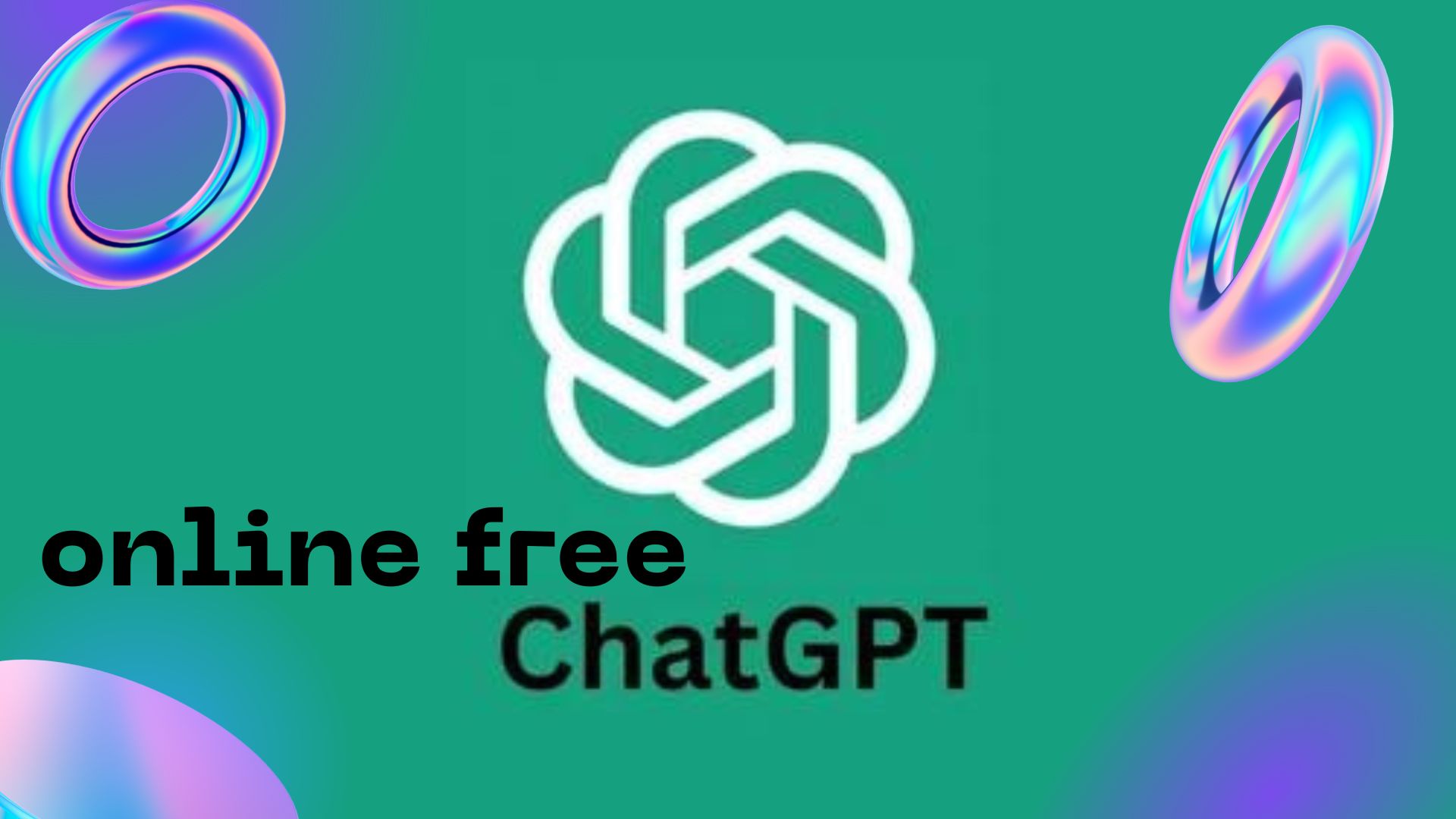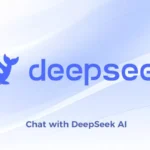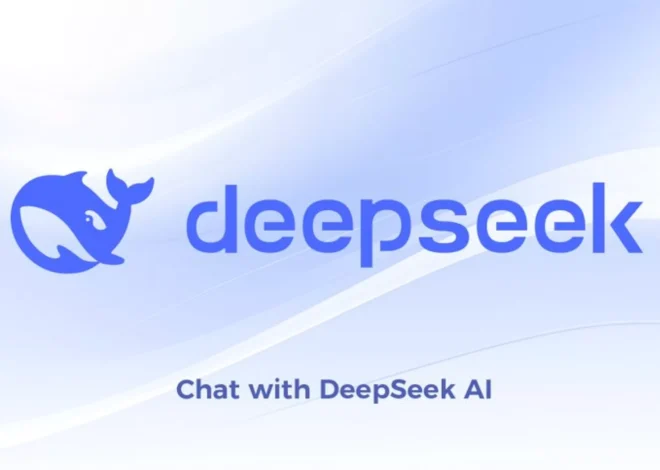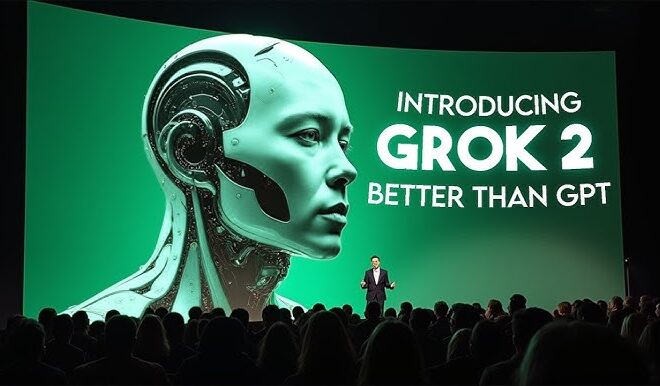
ai tools generator online free chat gpt
I. free chat gpt
In today’s digital age, the integration of artificial intelligence (AI) has revolutionized various aspects of our lives, including how we communicate and interact online. AI tools generators, particularly chat-based models like GPT (Generative Pre-trained Transformer), have emerged as powerful tools for facilitating natural language interaction and automating tasks in online environments. In this introduction, we will define AI tools generators, provide an overview of free online chat GPT platforms, and set the stage for exploring their capabilities and benefits.
A. Definition of AI Tools Generators
AI tools generators are software applications or systems that utilize artificial intelligence techniques, such as natural language processing and machine learning, to generate content, automate tasks, or assist users in various online activities. These tools leverage pre-trained models and algorithms to understand human language, generate text-based responses, and perform tasks autonomously, thereby enhancing efficiency and productivity in online environments.
B. Overview of Free Online Chat GPT Platforms
Free online chat GPT platforms are web-based applications that leverage chat-based GPT models to facilitate natural language interaction and communication in online conversations. These platforms offer users the ability to engage in text-based conversations with AI-powered chatbots or virtual assistants, which can understand user inputs, generate contextually relevant responses, and perform tasks based on user requests. Some popular examples of free online chat GPT platforms include ChatGPT, DialoGPT, and GPT-3 Playground.
C. Thesis Statement
The thesis of this exploration is to delve into the capabilities and benefits of AI tools generators, with a specific focus on free chat GPT platforms available online. By examining the functionalities, applications, and potential of these platforms, we aim to uncover how they enhance online communication, automate tasks, and foster creativity. Through real-world examples and insights, we will showcase the transformative impact of AI tools generators in shaping the future of online interaction and communication.
II. Understanding AI Tools Generators
In this section, we will delve deeper into the concept of AI tools generators, examining their functionalities, types, and practical applications, with a specific focus on chat-based GPT models.
A. Explanation of AI Tools Generators and Their Functionalities
AI tools generators are software systems designed to generate content, automate tasks, or assist users in various online activities using artificial intelligence techniques. These tools leverage advanced algorithms, machine learning models, and natural language processing to understand human language inputs, generate contextually relevant responses, and perform tasks autonomously. The functionalities of AI tools generators can vary widely depending on their intended purpose, but some common capabilities include:
- Text generation: AI tools generators can generate human-like text based on input prompts, allowing users to create content such as articles, stories, or marketing copy.
- Task automation: AI tools generators can automate repetitive tasks, such as data entry, scheduling, or customer support, by interpreting user commands and executing predefined actions.
- Personal assistance: AI tools generators can act as virtual assistants, providing users with information, reminders, recommendations, or assistance with everyday tasks.
B. Types of AI Tools Generators, with a Focus on Chat-Based GPT Models
There are various types of AI tools generators, each tailored to specific use cases and functionalities. One prominent category is chat-based AI tools generators, which enable natural language interaction and communication in online environments. Within this category, Generative Pre-trained Transformer (GPT) models have gained widespread popularity for their ability to generate coherent and contextually relevant text responses. GPT models are based on transformer architecture and are trained on large corpora of text data to understand and generate human-like language. Some other types of AI tools generators include:
- Content generators: AI tools that generate content such as articles, blog posts, or product descriptions based on input prompts or predefined parameters.
- Task automation tools: AI tools that automate repetitive tasks or workflows, such as data processing, document generation, or email management.
- Recommendation systems: AI tools that analyze user preferences and behavior to provide personalized recommendations for products, content, or services.
C. Examples of Free Online Chat GPT Platforms and Their Applications
There are several free online chat GPT platforms available that leverage GPT models to facilitate text-based conversations and interactions. These platforms offer users the ability to chat with AI-powered chatbots or virtual assistants in real-time. Some popular examples of free online chat GPT platforms include:
- ChatGPT: An openAI-powered chatbot that can engage in text-based conversations on various topics, answer questions, and provide assistance.
- DialoGPT: A conversational AI model trained on a large dataset of human conversations, capable of generating contextually relevant responses in natural language.
- GPT-3 Playground: An interactive web-based platform that allows users to experiment with GPT-3 models and explore their capabilities for generating text-based content and responses.
These free online chat GPT platforms have applications across various domains, including customer support, education, entertainment, and personal assistance. Users can interact with these platforms to ask questions, seek information, or engage in conversation, making them valuable tools for enhancing online communication and engagement.
III. Exploring Chat GPT Platforms
Chat GPT platforms leverage the power of Generative Pre-trained Transformer (GPT) models to facilitate natural language interaction and communication in online environments. In this section, we will delve into the architecture of chat-based GPT models, provide an overview of popular free online chat GPT platforms, and compare their features and capabilities.
A. Introduction to Chat-Based GPT Models and Their Architecture
Chat-based GPT models are built on the transformer architecture, a neural network architecture specifically designed for processing sequential data, such as text. The transformer architecture consists of multiple layers of self-attention mechanisms and feedforward neural networks, allowing the model to capture contextual dependencies and relationships within the input text.
In the context of chat-based GPT models, the architecture typically includes:
- Input embedding layer: Converts input text into numerical representations (embeddings) suitable for processing by the model.
- Multi-head self-attention layers: Capture relationships between different words or tokens in the input text, allowing the model to attend to relevant information.
- Feedforward neural networks: Apply non-linear transformations to the output of the attention layers to generate predictions or responses.
- Output softmax layer: Generates probability distributions over the vocabulary, allowing the model to select the next word or token in the response sequence.
The architecture of chat-based GPT models enables them to generate coherent and contextually relevant responses based on the input text, making them suitable for a wide range of conversational tasks.
B. Overview of Popular Free Online Chat GPT Platforms
Several free online chat GPT platforms have emerged, offering users the ability to engage in text-based conversations with AI-powered chatbots or virtual assistants. Some popular examples include:
- ChatGPT: Powered by OpenAI, ChatGPT allows users to interact with a chatbot trained on diverse conversational data. It can engage in text-based conversations on various topics, answer questions, and provide assistance.
- DialoGPT: Developed by Microsoft, DialoGPT is a conversational AI model trained on a large dataset of human conversations. It is capable of generating contextually relevant responses in natural language, making it suitable for engaging in realistic conversations.
- GPT-3 Playground: An interactive web-based platform that allows users to experiment with OpenAI’s GPT-3 model. Users can input prompts and explore the model’s capabilities for generating text-based content and responses.
These free online chat GPT platforms offer users the opportunity to interact with AI-powered chatbots and explore the capabilities of GPT models for generating human-like text.
C. Comparison of Features and Capabilities Across Different Platforms
When comparing features and capabilities across different chat GPT platforms, several factors can be considered, including:
- Model size and complexity: Some platforms may use larger or more complex GPT models, which can lead to improved performance but may also require more computational resources.
- Training data and domain specificity: The quality and diversity of the training data used to train the GPT models can impact their ability to generate contextually relevant responses across different topics and domains.
- User interface and usability: The user interface and ease of use of the platforms can vary, affecting the overall user experience and accessibility for different users.
- Integration and customization options: Some platforms may offer integration with other applications or platforms, as well as customization options for tailoring the chatbot’s behavior to specific use cases or preferences.
IV. Benefits of AI Tools Generators in Online Communication
AI tools generators offer numerous benefits in online communication, revolutionizing how individuals interact and engage with content. Here are some key advantages:
A. Facilitating Natural Language Interaction in Online Conversations
AI tools generators enable natural language processing, allowing users to engage in text-based conversations as if they were interacting with another human. This facilitates seamless communication and enhances user experience, leading to more meaningful and engaging interactions in online conversations.
B. Enhancing Productivity by Automating Repetitive Tasks in Chat-Based Interfaces
By automating repetitive tasks in chat-based interfaces, AI tools generators help streamline workflows and increase productivity. Tasks such as scheduling appointments, answering frequently asked questions, or processing orders can be automated, freeing up time for users to focus on more complex or creative tasks.
C. Supporting Creative Content Generation and Idea Generation
AI tools generators empower users to generate creative content and ideas effortlessly. Whether it’s generating blog posts, brainstorming ideas for marketing campaigns, or creating engaging social media content, AI tools generators provide inspiration and assistance, helping users unleash their creativity and produce high-quality content.
V. Practical Applications of Chat GPT Platforms
Chat GPT platforms have a wide range of practical applications across various domains. Here are some common use cases:
A. Customer Support and Service Automation
Chat GPT platforms can be deployed as virtual assistants or chatbots to provide customer support and service automation. They can answer customer inquiries, troubleshoot common issues, and guide users through self-service options, improving customer satisfaction and reducing support costs for businesses.
B. Content Creation and Generation for Social Media Platforms
Chat GPT platforms can assist content creators in generating engaging content for social media platforms. From writing captions and creating memes to generating hashtags and brainstorming content ideas, chat GPT platforms provide valuable assistance in creating compelling content that resonates with audiences.
C. Personal Assistance and Chat-Based Productivity Tools
Chat GPT platforms can act as personal assistants or chat-based productivity tools, helping users manage tasks, set reminders, organize schedules, and access information quickly and efficiently. Whether it’s scheduling meetings, setting reminders, or retrieving information from databases, chat GPT platforms enhance productivity and streamline daily workflows for users.
By leveraging the capabilities of chat GPT platforms, organizations and individuals can unlock new opportunities for enhancing communication, productivity, and creativity in various online contexts.
VI. Case Studies: Successful Implementation of Chat GPT Platforms
Chat GPT platforms have been successfully implemented by various companies to achieve different objectives. Here are three case studies showcasing the successful utilization of chat GPT platforms:
A. Company X: Improving Customer Engagement with a Chat GPT-Based Virtual Assistant
Background: Company X, an e-commerce retailer, aimed to improve customer engagement and support efficiency on its website.
Solution: Company X implemented a chat GPT-based virtual assistant on its website to provide instant support to customers. The virtual assistant was trained on a diverse dataset of customer queries and product information, enabling it to understand and respond to customer inquiries in real-time.
Results:
- Increased customer satisfaction: The chat GPT-based virtual assistant provided prompt and accurate responses to customer queries, leading to higher satisfaction levels among website visitors.
- Reduced support workload: By handling routine inquiries and providing self-service options, the virtual assistant reduced the workload on the customer support team, allowing them to focus on more complex issues.
- Improved sales conversion: The virtual assistant assisted customers in finding products, answering questions about product features, and guiding them through the purchase process, resulting in higher sales conversion rates.
B. Company Y: Enhancing Content Creation Workflows Using Chat GPT Models
Background: Company Y, a digital marketing agency, sought to streamline its content creation workflows and generate engaging content for clients.
Solution: Company Y integrated chat GPT models into its content creation workflows to assist writers in generating ideas, writing drafts, and refining content. Writers could input prompts or outlines, and the chat GPT model would generate suggestions or complete sections of the content.
Results:
- Increased efficiency: Chat GPT models accelerated the content creation process by providing writers with instant inspiration and assistance, reducing the time spent on brainstorming and drafting.
- Improved content quality: The AI-generated suggestions and drafts provided valuable insights and inspiration, leading to higher-quality content that resonated with audiences.
- Enhanced client satisfaction: Clients appreciated the creativity and relevance of the content produced with the assistance of chat GPT models, leading to increased client satisfaction and retention.
C. Company Z: Streamlining Internal Communication and Collaboration with Chat GPT Platforms
Background: Company Z, a multinational corporation, faced challenges with internal communication and collaboration across its global teams.
Solution: Company Z implemented chat GPT platforms as internal communication tools, allowing employees to engage in real-time conversations, share updates, and collaborate on projects. The platforms were integrated with project management systems and document repositories to streamline workflows.
Results:
- Improved collaboration: Chat GPT platforms facilitated seamless communication and collaboration among employees, regardless of geographical locations or time zones, leading to faster decision-making and project execution.
- Knowledge sharing: Employees used chat GPT platforms to share expertise, best practices, and resources, fostering a culture of knowledge sharing and continuous learning within the organization.
- Increased productivity: By centralizing communication and collaboration within chat GPT platforms, Company Z reduced the need for email exchanges and meetings, resulting in time savings and increased productivity across teams.
These case studies demonstrate the versatility and effectiveness of chat GPT platforms in addressing various business challenges and achieving tangible results in different organizational contexts.
VII. Challenges and Considerations
While chat GPT platforms offer numerous benefits, their adoption also raises important challenges and considerations that must be addressed to ensure responsible and ethical use. Here are three key areas of concern:
A. Ethical Considerations in AI-Generated Content and Interactions
Ethical Dilemmas: The use of AI-generated content and interactions raises ethical dilemmas regarding authenticity, transparency, and accountability. Users may not always be aware that they are interacting with AI-powered systems, leading to potential deception or manipulation.
Content Quality and Accuracy: AI-generated content may lack the human touch and nuance, leading to issues with accuracy, relevance, and appropriateness. Ethical considerations arise regarding the responsibility of organizations to ensure the quality and integrity of AI-generated content.
Bias and Representation: AI models trained on biased or unrepresentative datasets may perpetuate and amplify existing biases and stereotypes in the content they generate. Organizations must address biases in AI algorithms and data sources to ensure fairness and inclusivity in AI-generated content and interactions.
B. Addressing Concerns About Bias and Misinformation in Chat GPT Platforms
Algorithmic Bias: Chat GPT platforms may exhibit bias in their responses due to the biases present in the training data or the algorithms themselves. This can lead to the propagation of misinformation or the reinforcement of harmful stereotypes in online conversations.
Filtering Misinformation: Chat GPT platforms must implement mechanisms to filter out misinformation and ensure the accuracy and reliability of the information provided to users. This may involve incorporating fact-checking algorithms or human moderation to verify the accuracy of responses.
Promoting Critical Thinking: Users must be educated about the limitations of chat GPT platforms and encouraged to critically evaluate the information provided. Promoting media literacy and critical thinking skills can help mitigate the impact of misinformation and bias in online conversations.
C. Ensuring Privacy and Data Security in Online Chat Interactions
Data Privacy: Chat GPT platforms collect and process large amounts of user data, including personal information and conversation transcripts. Ensuring the privacy and confidentiality of this data is paramount to building trust with users and complying with data protection regulations.
Data Security: Chat GPT platforms must implement robust security measures to protect user data from unauthorized access, breaches, or misuse. This includes encryption, access controls, and regular security audits to identify and address vulnerabilities.
User Consent and Control: Users should have control over their data and be informed about how it is being used by chat GPT platforms. Providing transparency, obtaining explicit consent for data collection and processing, and offering options for data deletion or opt-out can empower users to make informed choices about their privacy.
Addressing these challenges and considerations requires a multi-faceted approach, involving collaboration between technology developers, policymakers, and civil society stakeholders to develop ethical guidelines, regulatory frameworks, and best practices for the responsible use of chat GPT platforms in online communication.
VIII. Future Trends and Opportunities

The future of chat GPT technology holds exciting possibilities for transforming various industries and driving innovation. Here are some key trends and opportunities to watch out for:
A. Emerging Advancements in Chat GPT Technology
1. Improved Model Capabilities: Chat GPT technology is expected to continue advancing, with future models exhibiting enhanced capabilities in understanding context, generating more coherent responses, and engaging in more nuanced conversations.
2. Multimodal Integration: Future chat GPT models may incorporate multimodal capabilities, allowing them to process not only text but also images, audio, and video inputs. This integration will enable more immersive and interactive user experiences in online communication.
3. Personalization and Adaptation: Chat GPT models may become more personalized and adaptive, learning from user interactions and preferences to tailor responses and recommendations to individual users’ needs and preferences.
B. Potential Applications and Implications of Chat GPT Platforms in Diverse Industries
1. Healthcare: Chat GPT platforms can assist healthcare professionals in patient communication, medical diagnosis, and treatment planning, improving access to healthcare services and patient outcomes.
2. Education: Chat GPT platforms can support personalized learning experiences, provide tutoring and educational assistance, and facilitate communication between students and educators in online learning environments.
3. Finance: Chat GPT platforms can automate customer support in banking and financial services, provide personalized financial advice and recommendations, and assist with fraud detection and risk assessment.
C. Strategies for Organizations to Leverage Chat GPT Platforms for Future Innovation and Growth
1. Invest in Research and Development: Organizations should invest in research and development efforts to stay at the forefront of chat GPT technology, exploring new use cases, refining algorithms, and improving model performance.
2. Foster Collaboration and Partnerships: Collaboration and partnerships with technology developers, researchers, and industry stakeholders can accelerate innovation and drive the adoption of chat GPT platforms across diverse sectors and industries.
3. Embrace Ethical and Responsible AI Practices: Organizations must prioritize ethical and responsible AI practices, ensuring transparency, fairness, and accountability in the development and deployment of chat GPT platforms. This includes addressing biases, protecting user privacy, and promoting diversity and inclusion in AI applications.
By embracing emerging advancements in chat GPT technology, identifying potential applications across diverse industries, and implementing strategic initiatives to leverage chat GPT platforms for innovation and growth, organizations can unlock new opportunities and stay ahead in the ever-evolving landscape of online communication and interaction.
- IX. Conclusion
In conclusion, AI tools generators, especially free chat GPT platforms, play a crucial role in shaping the landscape of online communication and interaction.
A. Recap of the Role and Significance of AI Tools Generators, Particularly Free Chat GPT Platforms, in Online Communication
Throughout this exploration, we have highlighted the pivotal role of AI tools generators, particularly free chat GPT platforms, in facilitating natural language interaction, enhancing productivity, and fostering creativity in online communication. These platforms have revolutionized how individuals and organizations engage in conversations, automate tasks, and generate content, leading to more efficient, engaging, and personalized online experiences.
B. Call to Action for Individuals and Organizations to Explore and Utilize Chat GPT Platforms Responsibly and Creatively
As we look to the future, it is imperative for individuals and organizations to explore and utilize chat GPT platforms responsibly and creatively. This involves embracing ethical and responsible AI practices, promoting transparency and accountability, and leveraging chat GPT platforms as tools for innovation and growth. By harnessing the capabilities of these platforms responsibly, we can unlock their full potential to drive positive change and enhance online communication for everyone.
C. Final Thoughts on the Transformative Potential of AI Tools Generators in Shaping the Future of Online Interaction and Communication
In closing, the transformative potential of AI tools generators in shaping the future of online interaction and communication cannot be overstated. These technologies hold the promise of revolutionizing how we communicate, collaborate, and connect in the digital age. By embracing AI tools generators with vision, foresight, and responsibility, we can harness their transformative power to create a more connected, inclusive, and innovative online world for generations to come.














